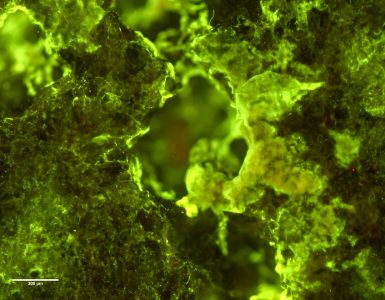By Rhodilee Jean Dolor
Plants and animals have been observed to exhibit strange behaviors during a solar eclipse, when the moon passes between the sun and the Earth causing evening-like darkness during the day.
Cicadas and birds alter their songs, flying bald eagles change their speed and direction, spiders tear down their webs and giraffes gather and gallop during a solar eclipse. Plants likewise experience decreased photosynthesis and transpiration during the celestial event.
Cumulus Clouds Disappear When the Moon Blocks the Sun
Findings of a new study conducted by meteorological experts show that eclipses can also cause the disappearance of certain types of clouds.
In the research published in Nature Communications Earth & Environment on Feb. 12, Victor Trees, a doctoral candidate in the department of geoscience and remote sensing at Delft University of Technology in the Netherlands, and colleagues looked at the satellite cloud measurements during three solar eclipse events that happened between the years 2005 and 2016.
They found that during a solar eclipse, low-level cumulus clouds start to dissipate in large numbers when a fraction of the sun is covered. They also found that these clouds do not reform until the end of the event.
“Our corrected data reveal that, over cooling land surfaces, shallow cumulus clouds start to disappear at very small solar obscurations (~15%). Our simulations explain that the cloud response was delayed and was initiated at even smaller solar obscurations,” Trees and colleagues wrote in their study.
The researchers clarified though that their finding is not applicable to all types of clouds since their study only involved the shallow cumulus clouds that hover over land.
“Those are the low, patchy, puffy clouds that you normally find on a sunny day,” Trees said, according to a report from CNN. “If you see those puffy clouds during eclipse day, then have a close look, because they might disappear.”
Cumulus clouds are associated with fair weather and often appear on bright sunny days. As the sun heats the Earth’s surface, warm air rises, cools and condenses water vapor in the air to produce cumulus clouds.
Trees explained that the Earth’s surface cools rapidly when the moon blocks sunlight during an eclipse and this prevents warm air from rising, a crucial process in the formation of cumulus clouds.
He said that the atmosphere is affected even with minimal solar obstruction, which means that the clouds are already changing regardless that there is still plenty of sunlight and people do not realize that a solar eclipse is happening.
Implications on Solar Geoengineering Efforts to Combat Global Warming
The findings raise concerns on the viability of a potential solution to global warming, one of the most pressing issues that the world currently faces.
The approach, called solar geoengineering, involves reflecting sunlight away or increasing the amount of heat that escapes back into space to cool the planet.
According to Harvard’s Solar Geoengineering Research Program (SGRP), the technique holds potential in combating global warming and its destructive effects.
“Climate models have consistently shown that solar geoengineering, when used in moderation and combined with emissions cuts, has the potential to reduce climate changes around the globe. For example, it could reduce climate impacts such as extreme temperatures, changes in water availability, and intensity of tropical storms.”
Trees and colleagues warned though that solar obscuration could decrease cloud cover. Solar sails deployed in space to block the sun and stratospheric aerosols dispersed to scatter sunlight mimic solar eclipse.
The researchers said that the unwanted consequences of geoengineering may counter the objective of fighting climate change since clouds also play a role in cooling the planet.
“This could be a warning for climate engineering. If we eclipse the sun in the future with technological solutions, it may affect the clouds. Fewer clouds could partly oppose the intended effect of climate engineering, because clouds reflect sunlight and thus actually help to cool down the Earth.”
Trees and colleagues said that the result of their study calls for further investigation on efforts to fight the climate crisis with solar geo-engineering.









